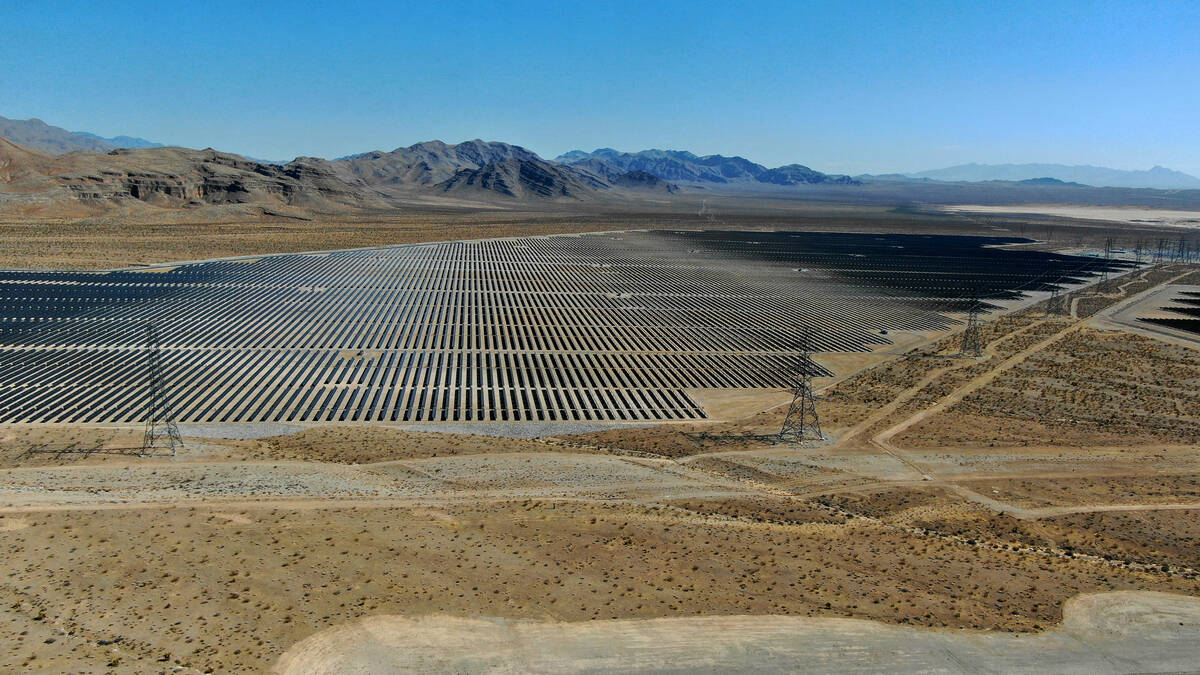EDITORIAL: The connection between green energy and high power bills

For years, Nevada has put affordable energy on the back burner. Now, ratepayers are getting burned.
The American Council for an Energy-Efficient Economy recently put out research on energy bills. In Las Vegas, it found that a quarter of low-income households spend 12.6 percent or more of their families’ income on home energy. The median for low-income households is a more manageable 5.5 percent. According to the group, if energy costs more than 10 percent of household income, the energy burden is deemed severe.
In practical terms, that can mean there isn’t enough money to go around. Low-income individuals sometimes must choose between keeping the power on and paying for household necessities. But during Las Vegas summers, air conditioning is a necessity, too.
For middle-income families, high power bills may not be a crisis, but they limit spending on other priorities. As the Review-Journal’s Emerson Drewes recently reported, these high prices are even hurting local charities. That includes Living Grace Homes, which helps young homeless mothers.
This wasn’t the future green-energy that snake oil salesmen promised Nevada. For years, these advocates assured voters and elected officials that green energy mandates would lower prices. A 2019 fact sheet from the Sierra Club, Natural Resources Defense Council and Western Resource Advocates, said, “A strong RPS lowers costs.”
RPS stands for renewable portfolio standard. As passed by voters and the Legislature, Nevada has to purchase half its power from renewable sources by 2030. The campaign to enshrine this in the state constitution pledged that it “would save Nevadans money.”
We’re still waiting.
The problem is that solar energy isn’t reliable. The sun sets every night, and people still want to run their air conditioners and use their appliances. Some drivers want to charge their EVs, too. Along with paying for solar, Nevada has to build new natural gas plants to back it up and supplement it.
Solar power isn’t even always available during the day. That’s why NV Energy is building Greenlink, a massive transmission line project. It needs to connect clean energy projects in different parts of the state to improve reliability. That project will cost more than $4 billion. It’s so expensive that it’ll take 70 years or more to pay off.
In June 2004, residential power in Nevada cost 9.66 cents per kilowatt-hour. In June 2014, it cost 12.83 cents per kWh. In June 2024, it was 15.5 cents per kWh.
Not exactly the savings you were promised. To lower power bills, Nevada needs to pare back its green energy mandates.